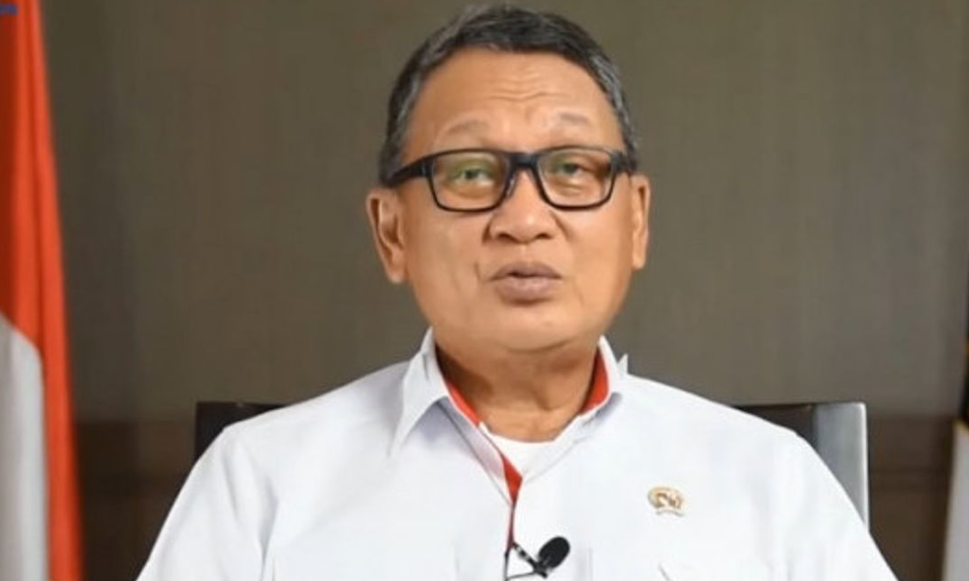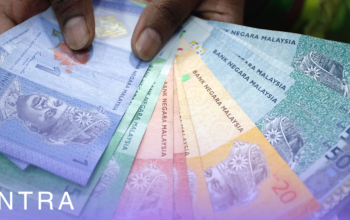sentra– Minister of Energy and Mineral Resources. In recent developments, the Minister of Energy and Mineral Resources (ESDM) has made significant strides toward ensuring more affordable gas prices for the Indonesian public. This initiative follows a crucial meeting with the Minister of Public Works and Housing (PUPR), marking a collaborative effort between the two ministries to address the nation’s energy concerns.
Collaborative Efforts for Energy Efficiency
The partnership between the Minister of Energy and Mineral Resources (ESDM) and the Minister of Public Works and Housing (PUPR) is a significant step towards enhancing energy efficiency in Indonesia. This collaboration is driven by the common goal of making energy more affordable and accessible to the public while fostering sustainable economic growth. Here are the key aspects of their collaborative efforts:
Infrastructure Development
Strengthening Distribution Networks: The development of a robust and extensive gas distribution network is crucial for ensuring a reliable and cost-effective gas supply. The Ministries are focusing on expanding and upgrading existing infrastructure, including pipelines and storage facilities. This will reduce bottlenecks in the supply chain and lower transportation costs, ultimately making gas cheaper for consumers.
Enhancing Transportation Systems: Improving the transportation systems for gas delivery is another priority. By investing in modern and efficient transportation technologies, the government aims to reduce the losses and costs associated with gas transportation. This includes the use of advanced logistics and monitoring systems to ensure that gas reaches its destination safely and efficiently.
Regulatory Reforms
Streamlining Permits and Licenses: One of the key challenges in the energy sector is the complex and time-consuming regulatory framework. The Ministries are working together to streamline the process of obtaining permits and licenses for gas-related projects. Simplifying these procedures will encourage more investments and expedite the implementation of infrastructure projects.
Reducing Bureaucratic Hurdles: By cutting down on bureaucratic red tape, the government can create a more business-friendly environment. This involves revising outdated regulations and policies that hinder the growth of the gas sector. The goal is to create a regulatory landscape that supports innovation and efficiency.
Investment Incentives
Tax Breaks and Subsidies: To attract more investments in the gas sector, the government is offering various incentives such as tax breaks and subsidies. These financial incentives are designed to reduce the initial costs for companies investing in gas infrastructure, making it more appealing for private sector participation.
Public-Private Partnerships: Encouraging public-private partnerships (PPPs) is another strategy to boost investment. By leveraging the resources and expertise of both the public and private sectors, the government can accelerate the development of critical gas infrastructure projects. PPPs also help in sharing the risks and rewards associated with large-scale projects.
Sustainable Practices
Promoting Clean Energy Technologies: Sustainability is a key component of the collaborative efforts. The Ministries are promoting the adoption of clean energy technologies within the gas sector. This includes the use of more efficient gas extraction and processing methods that minimize environmental impact and reduce greenhouse gas emissions.
Reducing Carbon Footprint: Efforts are also being made to reduce the carbon footprint of the gas industry. This involves implementing stricter environmental regulations and encouraging the use of renewable energy sources alongside natural gas. By adopting greener practices, the government aims to ensure that the benefits of affordable gas do not come at the expense of the environment.
Research and Innovation
Investing in R&D: The Ministries recognize the importance of research and development (R&D) in achieving long-term energy efficiency. Investments in R&D are being made to explore new technologies and methods for improving gas extraction, distribution, and usage. Innovations in these areas can lead to significant cost reductions and efficiency gains.
Collaborating with Academia and Industry Experts: By partnering with academic institutions and industry experts, the government is fostering a culture of innovation. Collaborative research projects and knowledge sharing initiatives are being encouraged to develop cutting-edge solutions for the energy sector.
Public Awareness and Education
Raising Awareness: Educating the public about the benefits of energy efficiency is essential for the success of these initiatives. The Ministries are launching awareness campaigns to inform consumers about the importance of using energy wisely and the economic advantages of lower gas prices.
Encouraging Energy-Saving Practices: Public education programs are also being implemented to promote energy-saving practices among households and businesses. By encouraging the adoption of efficient appliances and conservation techniques, the government aims to reduce overall energy consumption and further drive down costs.
The collaboration between the Ministry of Energy and Mineral Resources and the Ministry of Public Works and Housing represents a comprehensive approach to addressing Indonesia’s energy challenges. By focusing on infrastructure development, regulatory reforms, investment incentives, sustainable practices, research and innovation, and public awareness, the government is paving the way for a more energy-efficient and economically resilient future.
Benefits of Lower Gas Prices
Lower gas prices have multifaceted benefits that extend across various sectors of the economy and positively impact the daily lives of consumers. Here’s an expanded look at the advantages:
Economic Stimulus
Cost Savings for Consumers: Lower gas prices directly translate into reduced energy costs for households and businesses alike. This frees up disposable income that can be allocated to other essential goods and services or saved for future investments. As a result, consumers experience a higher standard of living and improved financial stability.
Boost for Industries: Industries that heavily rely on gas as a primary input benefit from decreased production costs. Lower operational expenses enable these businesses to enhance competitiveness both domestically and internationally. This, in turn, supports industrial growth, job creation, and overall economic expansion.
Impact on Inflation
Inflation Control: Gas prices influence the cost structure of various goods and services throughout the economy. When gas prices decrease, transportation costs and manufacturing expenses decline, leading to lower overall production costs. Consequently, this can help stabilize or even reduce inflationary pressures, contributing to a more stable economic environment.
Energy Security and Stability
Enhanced Energy Security: Reduced reliance on expensive energy imports enhances a nation’s energy security. Lower gas prices encourage greater domestic production and investment in energy infrastructure, thereby diversifying energy sources and reducing vulnerability to external supply disruptions.
Stability for Businesses: Predictable and affordable energy costs provide businesses with a stable operating environment. This stability encourages long-term planning and investment in infrastructure and innovation, fostering sustainable economic growth and resilience against market fluctuations.
Environmental Impact
Promotion of Clean Energy Transition: Lower gas prices can incentivize the adoption of cleaner energy technologies. As businesses and consumers seek cost-effective alternatives, there’s an opportunity to invest in renewable energy sources and energy-efficient technologies. This shift towards cleaner energy contributes to environmental sustainability and mitigates the impacts of climate change.
Social Benefits
Affordability for Low-Income Groups: For low-income households, energy costs constitute a significant portion of their expenses. Lower gas prices alleviate financial burdens, making basic utilities more affordable and improving overall quality of life. This social benefit promotes inclusivity and equitable access to essential resources.
Community Development: Lower energy costs support community development initiatives by reducing operational expenses for public services, such as schools, hospitals, and municipal infrastructure. This allows local governments to allocate resources towards improving public amenities and fostering community resilience.
Long-Term Economic Outlook
Investment and Growth Opportunities: Stable and affordable energy prices attract domestic and foreign investments in energy-intensive industries. This influx of capital stimulates job creation, technological advancements, and infrastructure development, positioning the economy for sustainable growth over the long term.
Global Competitiveness: By reducing production costs, lower gas prices enhance the competitiveness of domestic goods and services in the global market. This strengthens export potential and contributes to a favorable trade balance, bolstering the country’s position in international trade relations.
In conclusion, lower gas prices offer far-reaching benefits that extend beyond immediate cost savings. From economic stimulus and inflation control to enhanced energy security and environmental sustainability, the advantages contribute to a resilient and prosperous economy. By leveraging these benefits through strategic policies and investments, governments can foster inclusive growth and improve the well-being of their citizens.
Future Outlook
Looking ahead, the future outlook for energy policies and initiatives in Indonesia is poised to shape a more sustainable and resilient energy landscape. The collaborative efforts and strategic measures implemented by the Ministry of Energy and Mineral Resources (ESDM) and the Ministry of Public Works and Housing (PUPR) lay the groundwork for several key developments:
Continued Infrastructure Development
Expansion of Gas Networks: The ongoing expansion and modernization of gas distribution networks will remain a priority. This includes the construction of new pipelines, storage facilities, and transportation systems to enhance the efficiency and reliability of gas supply across regions. By improving infrastructure, the government aims to reduce transportation costs and losses associated with gas distribution.
Integration of Renewable Energy: In parallel with gas infrastructure development, efforts to integrate renewable energy sources into the energy mix will accelerate. Investments in solar, wind, hydroelectric, and geothermal power projects are expected to increase, diversifying Indonesia’s energy sources and reducing reliance on fossil fuels. This shift towards renewables aligns with global sustainability goals and positions Indonesia as a leader in clean energy innovation.
Regulatory Reforms and Incentives
Streamlined Permitting Processes: Further reforms in regulatory frameworks will focus on streamlining permitting processes for energy projects. Simplifying bureaucracy and reducing administrative hurdles will facilitate faster project implementation and attract more private sector investments. These reforms are crucial for fostering a conducive environment for energy infrastructure development.
Incentives for Energy Efficiency: Enhanced incentives and subsidies will be introduced to promote energy efficiency measures across industries and households. Initiatives may include tax incentives for energy-efficient technologies, subsidies for energy audits, and grants for research and development in energy conservation. By incentivizing energy efficiency, the government aims to optimize energy use and reduce overall consumption.
Technological Advancements
Advancements in Energy Technology: Investments in research and development (R&D) will drive technological advancements in the energy sector. Innovations in clean energy technologies, smart grid systems, energy storage solutions, and digital energy management tools will play a crucial role in enhancing energy efficiency and sustainability. Collaborations between academia, research institutions, and industry stakeholders will be pivotal in fostering innovation-led growth.
Climate Action and Environmental Sustainability
Commitment to Climate Goals: Indonesia’s commitment to achieving climate goals will be reinforced through stringent environmental regulations and sustainable practices. Policies aimed at reducing carbon emissions, improving air quality, and conserving natural resources will be prioritized. The government will continue to engage in international partnerships and initiatives to address global climate challenges and uphold environmental stewardship.
Public Engagement and Awareness
Education and Outreach Programs: Public engagement will be strengthened through education and outreach programs on energy conservation and sustainability. Awareness campaigns will highlight the benefits of energy-efficient practices and encourage behavioral changes among consumers. By empowering communities with knowledge, the government aims to build a culture of energy responsibility and collective action towards a sustainable future.
Economic Resilience and Growth
Stimulus for Economic Growth: Lower energy costs resulting from efficient energy policies will stimulate economic growth and enhance competitiveness. Industries will benefit from reduced operational costs, fostering job creation and expansion opportunities. The resilience of the economy will be bolstered through diversified energy sources and improved energy security, ensuring stability in energy supply amid global uncertainties.
In conclusion, the future outlook for Indonesia’s energy sector is characterized by a comprehensive approach to sustainability, innovation, and economic growth. By leveraging strategic investments, regulatory reforms, technological advancements, and public engagement, Indonesia is poised to achieve a balanced energy ecosystem that supports long-term prosperity and environmental stewardship. As the nation progresses towards its energy goals, collaboration and adaptive governance will remain essential in navigating challenges and seizing opportunities in the evolving global energy landscape.
Conclusion
In conclusion, the collaborative efforts between the Ministry of Energy and Mineral Resources (ESDM) and the Ministry of Public Works and Housing (PUPR) represent a pivotal step towards ensuring a sustainable and efficient energy future for Indonesia. By focusing on infrastructure development, regulatory reforms, investment incentives, and sustainable practices, the government is laying a solid foundation for economic resilience and environmental stewardship.
Achievements and Implications
Economic Benefits: Lowering gas prices not only alleviates financial burdens on households but also enhances the competitiveness of Indonesian industries. Reduced energy costs stimulate economic growth, attract investments, and create employment opportunities, thereby improving living standards and fostering inclusive development.
Environmental Sustainability: The promotion of clean energy technologies and sustainable practices mitigates environmental impact, supporting Indonesia’s commitment to global climate goals. By integrating renewable energy sources and implementing energy-efficient measures, the nation is advancing towards a greener and more sustainable energy ecosystem.
Strategic Policy Framework: The strategic collaboration between ESDM and PUPR underscores the importance of inter-ministerial synergy in addressing complex energy challenges. Streamlined regulatory frameworks, enhanced infrastructure, and supportive incentives create an enabling environment for private sector participation and innovation.
Future Directions
Looking forward, Indonesia’s energy sector is poised for continued growth and transformation. Investments in renewable energy, advancements in energy technology, and ongoing regulatory reforms will shape a resilient energy landscape. Public engagement and education will empower communities to embrace energy conservation and sustainability practices, contributing to collective efforts in achieving long-term energy security and environmental stewardship.
Call to Action
As Indonesia navigates towards a sustainable energy future, collaboration, innovation, and adaptive governance will be critical. The government’s commitment to enhancing energy efficiency, diversifying energy sources, and prioritizing environmental sustainability sets a positive precedent for other nations facing similar energy challenges.
In essence, the collaborative efforts of ESDM and PUPR reflect Indonesia’s proactive stance in shaping a future where energy is not only affordable and reliable but also sustainable and environmentally responsible. By building on current achievements and embracing future opportunities, Indonesia is poised to emerge as a leader in the global energy transition, ensuring prosperity for generations to come.




